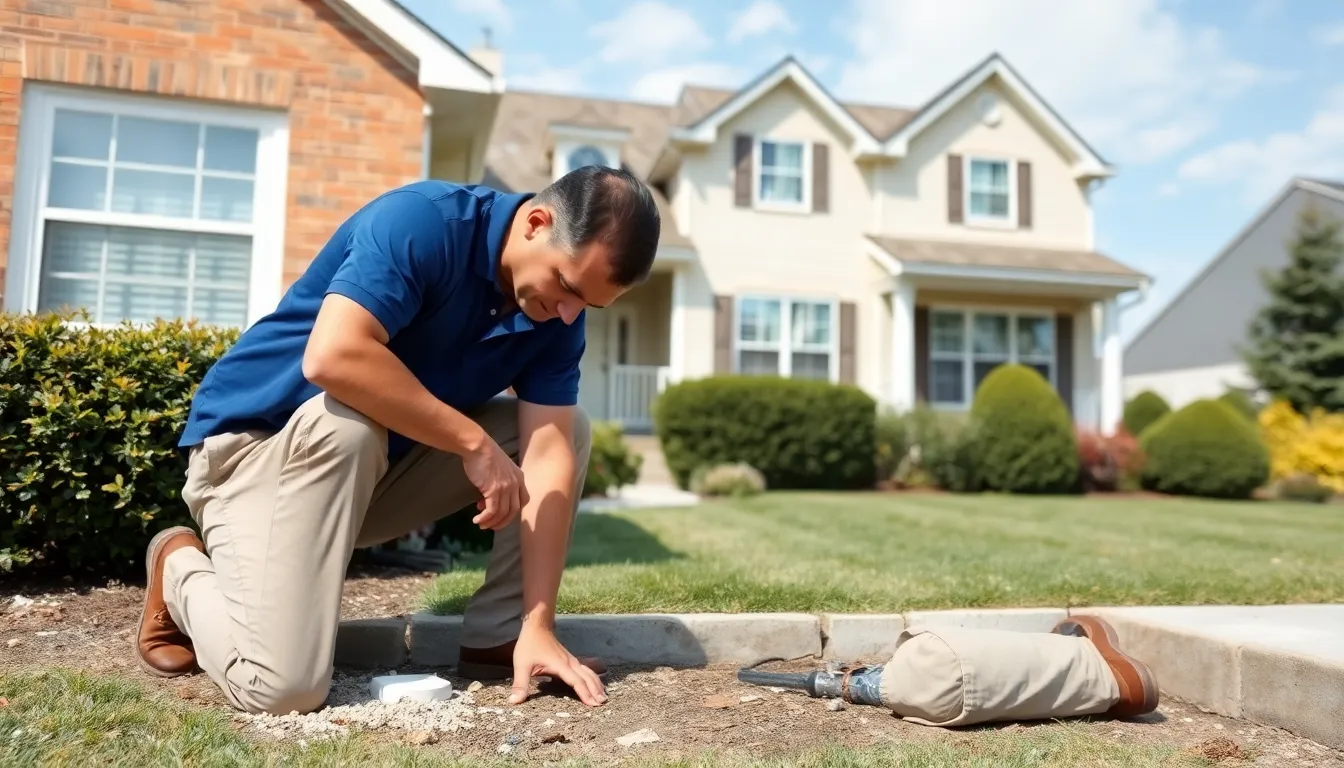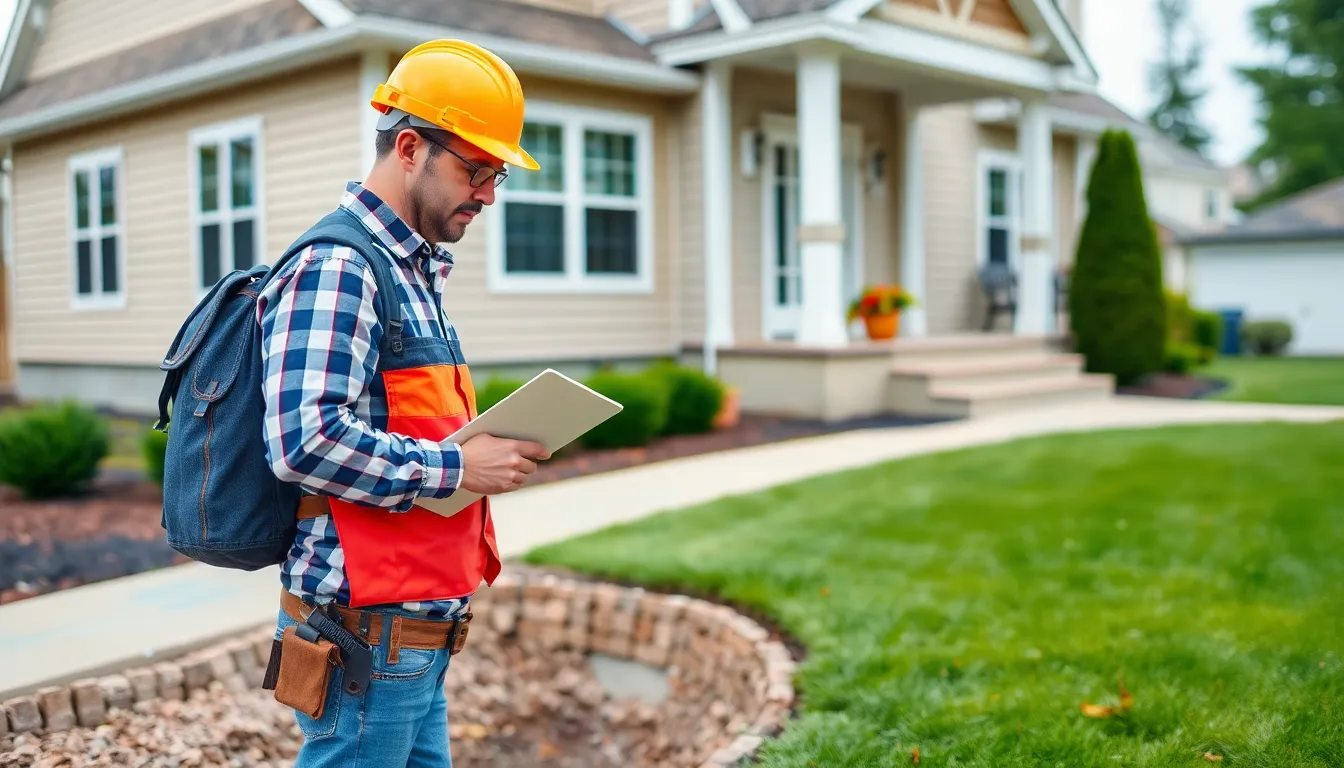Buying a home can feel like a thrilling rollercoaster ride, but without a solid home inspection checklist, it might just turn into a bumpy ride with unexpected twists. Imagine moving into your dream house only to discover that the plumbing resembles a scene from a horror movie. Yikes! A thorough inspection is your golden ticket to avoiding such nightmares.
Table of Contents
ToggleImportance of Home Inspection Checklist
A home inspection checklist plays a crucial role in ensuring the reliability of a property. Identifying potential issues before completing a purchase helps buyers avoid costly repairs later. Making educated decisions becomes easier when buyers know what to look for in a home.
This checklist provides a structured approach to evaluating essential aspects of a property. Inspecting elements such as roofing, plumbing, electrical systems, and HVAC ensures that everything functions properly. Assessing major areas minimizes risks associated with hidden defects that could cost thousands to fix.
Buyers can prioritize their repair budget with a detailed home inspection. Knowing which issues need immediate attention aids in negotiating with sellers effectively. Understanding the overall condition of the property means making informed choices during the buying process.
Relying on a checklist also helps streamline the inspection process. Keeping track of various components can reduce stress and prevent oversights. An organized assessment of the property enhances the buyer’s confidence in proceeding with the transaction.
The importance of documenting findings from the inspection cannot be overstated. Writing down observations during the evaluation clarifies what needs action. It also serves as a valuable reference for future maintenance of the home.
Utilizing a home inspection checklist ultimately safeguards the investment made in a property. Clarity in what to expect promotes peace of mind throughout the buying journey. Comprehensive inspections pave the way for successful homeownership by minimizing future surprises.
Key Components of Home Inspection Checklist


A home inspection checklist focuses on critical aspects of a property, ensuring a thorough evaluation. This section outlines the essential components to consider during the inspection process.
Structural Elements
Structural integrity represents a key focus during a home inspection. Inspectors assess the foundation for cracks and signs of settling. Roof conditions, including missing shingles and water damage, warrant careful examination. Walls, ceilings, and floors should show no significant defects like bulging or holes. Additionally, checking for adequate insulation is vital for energy efficiency.
Systems and Appliances
Addressing systems and appliances forms another essential part of the checklist. Inspectors evaluate the heating and cooling systems for efficiency and safety. Water heaters need inspection to ensure functionality and signs of leaks. Electrical systems, including wiring and circuit breakers, require careful scrutiny for adherence to codes. Kitchens and laundry areas also undergo assessment for working appliances and proper plumbing connections.
Exterior Features
Exterior features largely impact the overall impression of a home. Inspectors examine siding for damage caused by weather exposure or pests. Windows and doors should open and close easily while checking for proper seals. Gutters require evaluation to guarantee they direct water away from the home effectively. Landscape grading must allow for proper drainage, reducing risks of erosion and foundation issues.
Preparing for a Home Inspection
Preparation plays a vital role in ensuring a successful home inspection. Taking steps beforehand can enhance the inspection experience and yield more accurate results.
Choosing an Inspector
Selecting a qualified inspector is crucial in the home-buying process. Seek inspectors who are certified and experienced in residential properties. Verifying credentials, such as their licensing and training, helps establish their competence. Reading online reviews provides insight into previous clients’ experiences. Locating professionals who offer sample inspection reports reveals their thoroughness. Finally, discussing fees and services upfront ensures clarity, allowing the buyer to make an informed choice.
Reviewing the Checklist
A comprehensive home inspection checklist guides the review process. Start by familiarizing yourself with the key components, such as structural integrity and system functionality. Thoroughly examining each item during the inspection allows for identifying potential issues. Prioritizing areas that require immediate attention can influence negotiation with the seller. Going over the checklist in advance aids in preparing specific questions for the inspector. Highlighting concerns or focusing on specific systems helps streamline the inspection process. Taking the time to review the checklist increases confidence and promotes a successful purchasing experience.
Common Issues Found During Inspections
Home inspections often reveal several common issues that buyers should be aware of. Leaky roofs frequently occur, causing water damage and encouraging mold growth. Cracked foundations often signal structural problems that could lead to costly repairs.
Electrical systems can present hazards when outdated wiring or insufficient grounding is found. Plumbing issues, such as leaks in pipes or faulty water heaters, often require immediate attention. Signs of pest infestations, particularly termites, may necessitate professional treatment.
Heating and cooling systems often exhibit inefficiencies, resulting in higher energy bills. Insufficient insulation can lead to significant heat loss, negatively impacting comfort and energy efficiency. Windows and doors frequently show signs of wear, resulting in drafts and compromised security.
Exterior elements like siding and gutters often require inspection. Deteriorated siding may expose the structure to water damage, while clogged gutters commonly result in improper drainage. Landscape grading might impact drainage as well, leading to water pooling around the foundation.
Another frequent concern involves ventilation. Poor attic ventilation can lead to moisture problems and affect roof longevity. Additionally, missing or damaged smoke detectors and carbon monoxide detectors pose significant safety risks.
Identifying these issues during a home inspection allows buyers to address concerns before finalizing the purchase. By leveraging a comprehensive home inspection checklist, buyers can prioritize repairs and negotiate effectively with sellers.
A well-prepared home inspection checklist is an invaluable tool for any homebuyer. It not only highlights potential issues but also empowers buyers to make informed decisions. By focusing on critical areas like structure and systems buyers can avoid costly surprises down the road.
Thorough documentation during the inspection process ensures that necessary actions are clear and manageable. This proactive approach not only enhances negotiation power with sellers but also fosters confidence in the home-buying journey. Ultimately a comprehensive checklist paves the way for successful homeownership and peace of mind.



